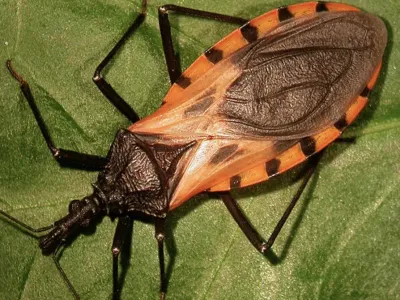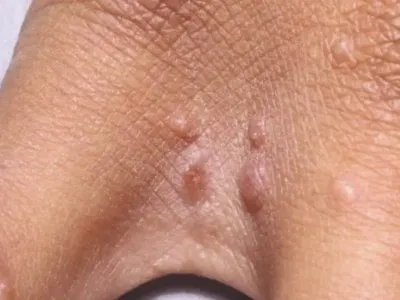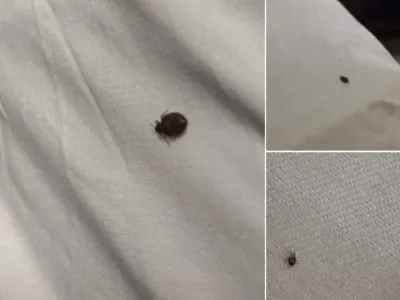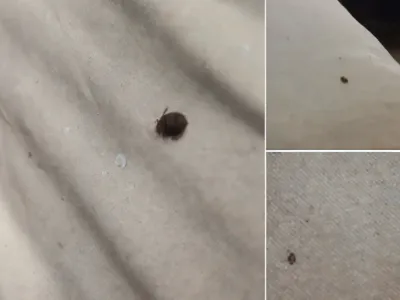These bugs come out at nighttime, and attacking victims, they silently kill or leave them with a lifelong infection
As a young girl, Emiliana Rodriguez watched a soccer game one night when suddenly, a player collapsed and died. This event left her deeply afraid of the dark and an unseen threat she learned was called Chagas.
Chagas disease spreads through bugs active at night, infecting around 8 million people each year and resulting in about 12,000 deaths.
At 42, after moving from Bolivia to Barcelona 27 years earlier, Rodriguez discovered she had Chagas. She often felt scared at night, fearing she might not wake up.
During her first pregnancy at age eight, tests showed she carried the Chagas gene. She remembered her friend’s sudden death and felt terrified, worrying about her unborn child’s fate.
Doctors gave her medication to stop the disease from passing to her baby, who was born healthy.
Elvira Idalia Hernández Cuevas found out about Chagas when her 18-year-old son was diagnosed. She had donated blood in Veracruz, Mexico, where she was born. When they tested her blood, it came back positive for Chagas.
Hernández learned about the disease online, realizing it was often deadly and feeling lost about what to do.
Many don’t know about the diseases spread by these bugs, named after Carlos Ribeiro Justiniano Chagas, who discovered it in 1909.
Chagas has been reported in Europe, Japan, Australia, Latin America, and North America over the years.
Kissing bugs live in rural or suburban homes, biting and potentially infecting people at night. The infection spreads if their feces enter cuts or mucous areas like the mouth or eyes.
The World Health Organization (WHO) says 6 to 7 million people globally have Chagas, but many are unaware they’re infected. The CDC states it kills more in Latin America than any other parasitic disease, including malaria.
In the U.S., nearly 300,000 are infected, though it’s not considered widespread.
Up to 30% of those with Chagas develop severe digestive or heart issues, with symptoms appearing years later.
Only 10% of Chagas cases are detected worldwide, complicating prevention and treatment.
Hernández and her daughter sought help from many doctors, but few knew about Chagas. Hernández feared for her son’s life due to the lack of reliable information.
Finally, with help from a medically knowledgeable relative, Idalia received the treatment she needed.
Despite Mexican government claims of controlling Chagas, Hernández disagrees, noting misdiagnosis is common.
The WHO lists Chagas as a neglected tropical disease, overlooked due to its silent nature and lack of symptoms early on.
The Chagas Hub in the UK aims to increase testing and manage transmission risks, especially from mother to child.
Professor Moore of the Hospital for Tropical Diseases in London doubts significant progress by 2030, calling it “glacial.”
Two long-available drugs, benznidazole and nifurtimox, treat Chagas but can be harsh and ineffective in adults.
Rodriguez suffered side effects like dizziness and nausea but continued her treatment and gets regular check-ups.
Pharmaceutical firms lack incentive to develop better treatments, according to Moore.
As head of FINDECHAGAS, Hernández works to raise awareness until there’s more demand for new treatments.
In Spain, Rodriguez fights Chagas through a public awareness campaign by the Barcelona Institute for Global Health.
She’s determined to bring Chagas into public discussion and supports testing and treatment.
Their efforts are gaining attention.
The WHO recognized World Chagas Disease Day on April 14, marking Carlos Chagas’s discovery. By 2030, WHO aims to manage various diseases, including Chagas.
The CDC advises sealing homes, using window screens, and maintaining cleanliness to prevent bug infestations.
If you find a kissing bug, don’t crush it. Instead, trap it in a jar with alcohol, freeze it, and take it for identification.
Sharing this story helps raise awareness about this often-overlooked disease.



